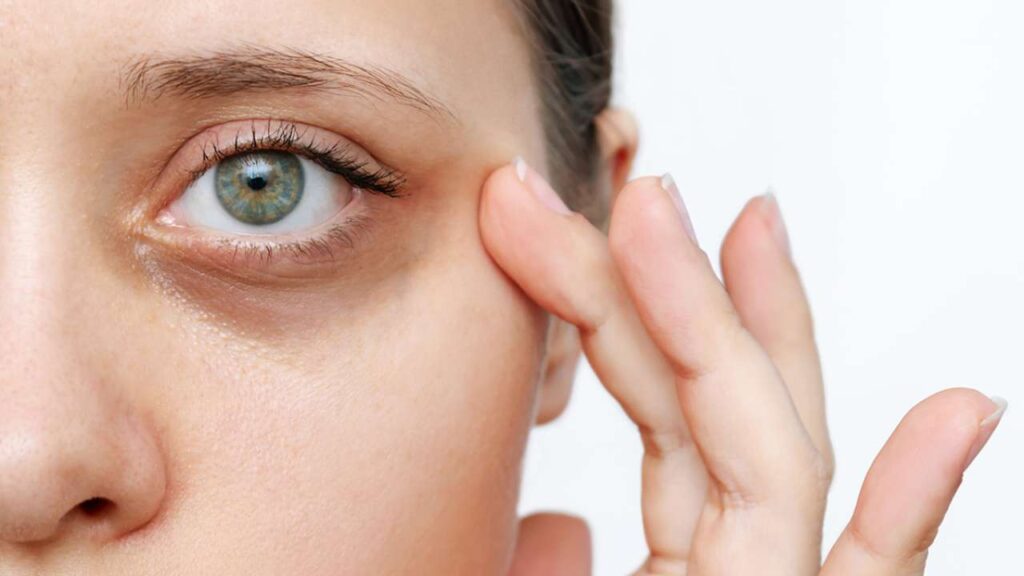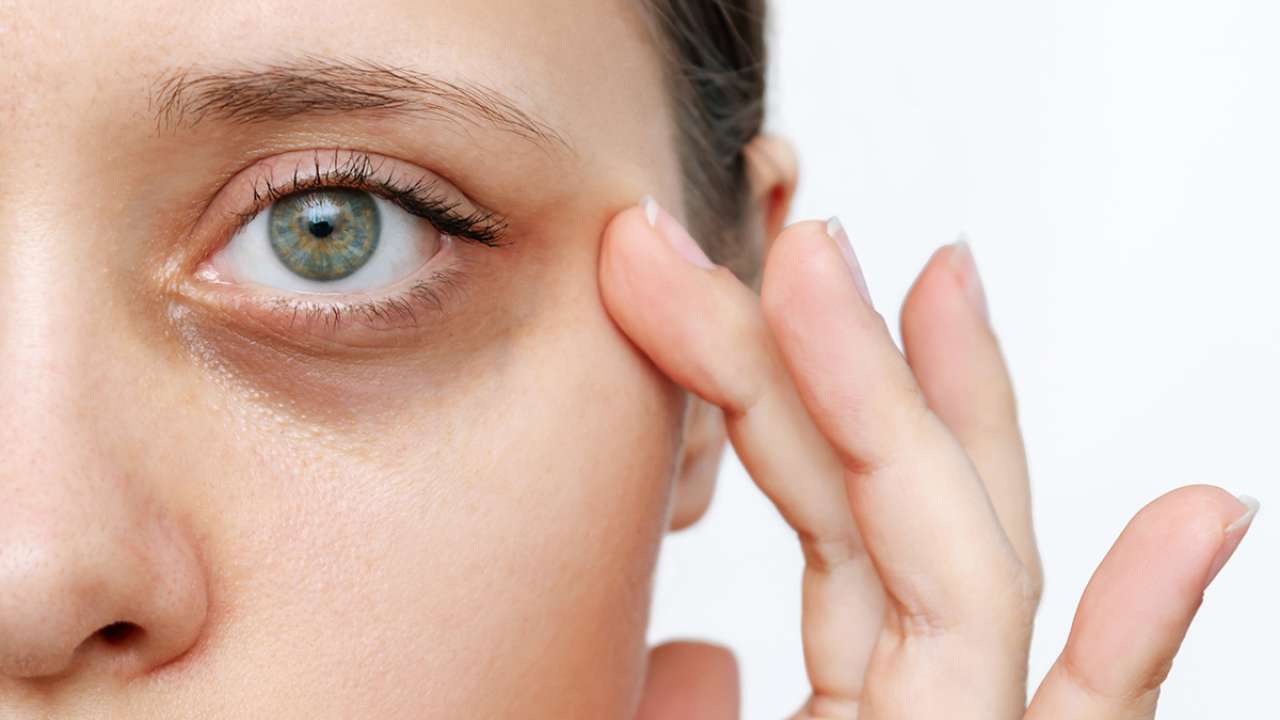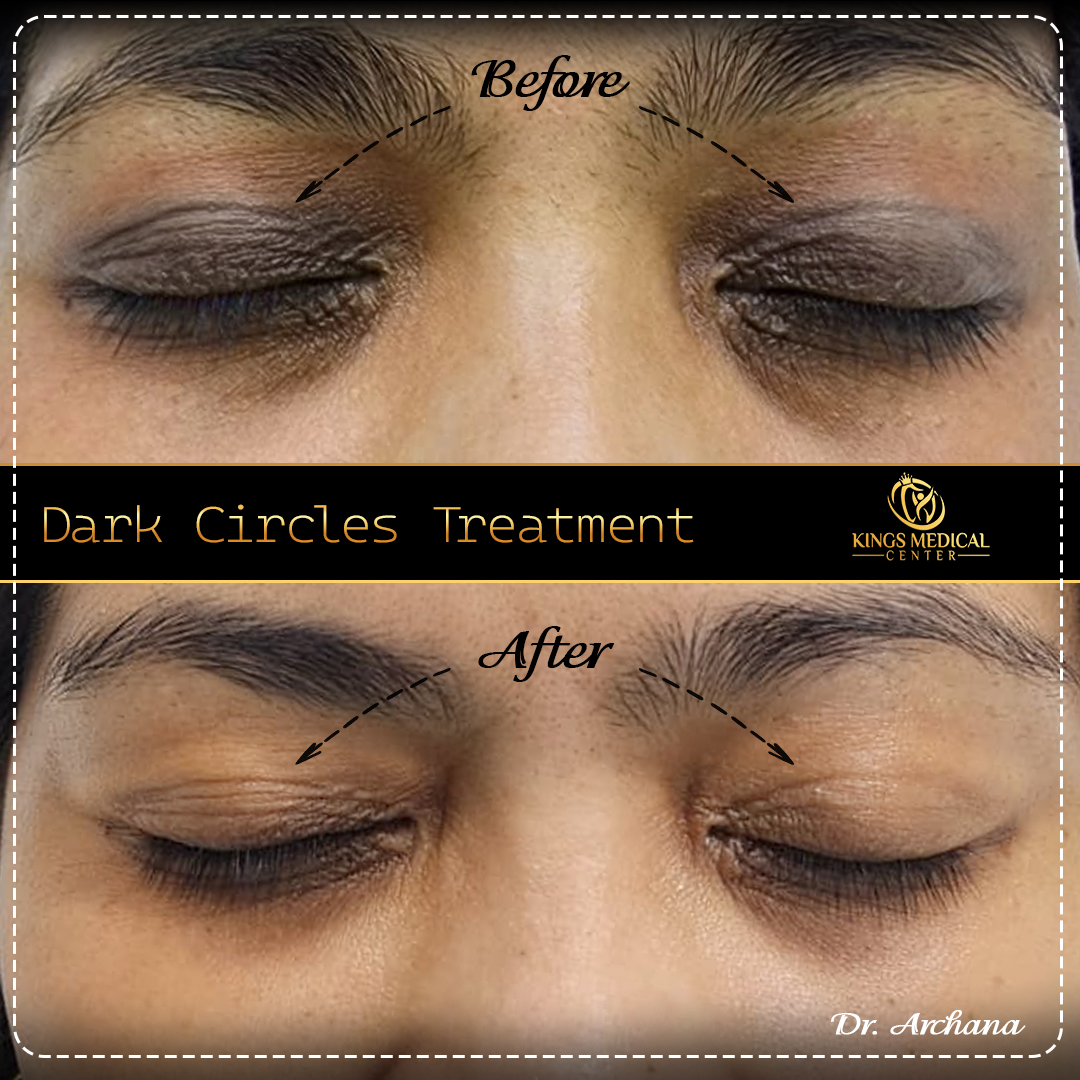Dark Circles Treatment

Dark Circles Treatment admin January 10, 2025 Dermatology Dark circles under the eyes are often associated with tiredness and a lack of sleep. However, other factors such as allergies, thyroid conditions, and aging can also contribute to their appearance. Depending on skin color, these circles may look purple, blue, dark brown, or black. Understanding and Managing Dark Circles at King’s Medical Center While dark circles are usually not a medical concern, many people seek ways to reduce their appearance for cosmetic reasons. Sometimes, these circles can indicate a need for lifestyle changes, like improving sleep habits or diet. Common Causes of Dark Circles Lack of sleep or poor sleeping habits Allergies, including hay fever Hyperpigmentation: Increased melanin production Reduced levels of fatty tissue around the eyes Thinning skin under the eyes Iron deficiency anemia Overexposure to sunlight Frequent rubbing of the eyes Smoking Thyroid conditions Dehydration Dermatitis Risk Factors for Dark Circles Certain factors can increase the likelihood of developing dark circles: Nonwhite heritage: Dark circles are more common among people with darker skin tones due to pigmentation changes. Older age: Loss of fatty tissue and thinning skin around the eyes, a natural part of aging, can make dark circles more prominent. The formation of a tear trough (a hollow under the eyes) is also related to aging. Genetics: Dark circles can be hereditary. If someone in your family has dark circles, you might also develop them. Medical Treatments for Dark Circles If home remedies fail to reduce dark circles, consulting a doctor or dermatologist at King’s Medical Center for medical treatment might be necessary. Options include: Topical Creams: Bleaching creams like hydroquinone, tretinoin, or a combination of both can reduce hyperpigmentation. Hydroquinone typically needs to be used for at least three months to see results. Kojic Acid: A natural product from fungi that can treat dark circles, although it may cause contact dermatitis and skin redness. Azelaic Acid: Effective for treating hyperpigmentation and safe for long-term use. Topical Vitamin C: A 10% vitamin C lotion has shown effectiveness in lightening dark circles over six months. Chemical Peels: Alpha hydroxy acids, such as glycolic acid, can lighten hyperpigmentation. Combining chemical peels with topical creams may enhance results. Lasers: Less invasive laser procedures, like pulsed dye or diode lasers, can effectively treat dark circles with a lower risk of scarring. Fillers: Dermal fillers like platelet-rich plasma or hyaluronic acid gel injections can address thinning skin or loss of fatty tissue. Surgery: Blepharoplasty can remove dark circles caused by fat deposits or extra skin around the eye area. Final Note The area under the eye is extremely delicate, so discussing potential side effects with a certified dermatologist is crucial. If dark circles are medication-related, such as those caused by bimatoprost for glaucoma, they should resolve after discontinuing the medication. For personalized advice and treatment options, consult with our experts at King’s Medical Center. Tags : Share This : Recent Posts Dark Circles TreatmentJanuary 10, 2025 Hello world!January 4, 2025 Have Any Question? Speak with our expert specialists to discuss your needs and explore the best treatment options for you +971 4 255 2020 +971 58 908 9118 Categories Uncategorized Dermatology




